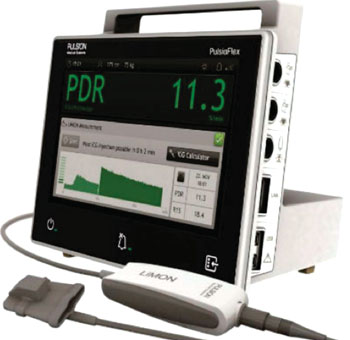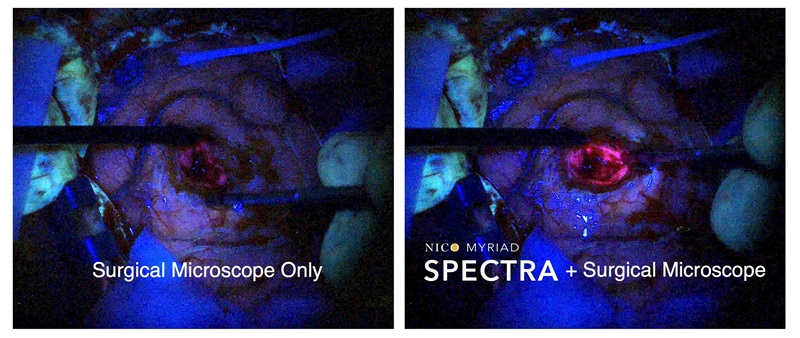Probing Device Measures Potential Donors' Liver Function
By HospiMedica International staff writers
Posted on 11 Jun 2015
A portable finger-probe device can successfully measure liver function in brain-dead organ donors, according to a new study.Posted on 11 Jun 2015
Researchers at the University of California Los Angeles (UCLA; USA) conducted a prospective study involving 53 consecutive adult, brain-dead donors to evaluate the finger-probe-based device as a rapid, noninvasive, measure of liver function performed before graft procurement. The device operates much like a pulse oximeter, gauging liver function by indocyanine green plasma disappearance rates (ICG-PDR), after the dye is injected into the potential donor's bloodstream. The results were compared with graft function and outcomes. Both donor and recipient teams were blinded to ICG-PDR measurements.

Image: The Pulsion PulsioFlex device with LiMON Liver function technology (Photo courtesy of Pulsion).
The results showed that 11 liver grafts were declined by all centers because of quality; the other 42 grafts were transplanted. Logistic regression analysis showed that ICG-PDR results were the only donor variable to be significantly associated with seven-day graft survival. Other measures, including donor risk index, donor age, and transaminase levels at peak or procurement were not significantly associated with graft survival. The study was published early online on April 6, 2015, in the Journal of Surgical Research.
“This device is best single predictor of organ survival in our patients. Ultimately, what it does is gives us a quantitative measure of how good a liver is without having to visually inspect the organ,” said lead author Ali Zarrinpar, MD, an assistant professor of surgery in the division of liver and pancreas transplantation. “It gives us a measurement to talk about when we're thinking about whether to transplant an organ into a recipient.”
“These data warrant further exploration in a larger trial in a variety of settings to evaluate acceptable values for donated livers,” concluded Dr. Zarrinparand colleagues. “At a time of increasing regional sharing and calls for national organ sharing, this method would assist in the standardization of graft evaluation. It could also lead to increasing liver graft utilization while decreasing travel risk and expenses.”
About 17,000 adults and children approved for transplants are waiting for donated livers to become available every year in the US alone, with 1,500 people dying while waiting for one to become available. A liver transplant may involve the whole liver, a reduced liver, or a liver segment. Most transplants involve the whole organ, but segment transplants have been performed with increasing frequency in recent years. This would allow two liver recipients to be transplanted from one donor, or allow for living donor liver donation.
For the study, the researchers used the Pulsion Medical Systems (Feldkirchen, Germany) PulsioFlex device with LiMON Liver function technology.
Related Links:
University of California Los Angeles
Pulsion Medical Systems












.jpg)

